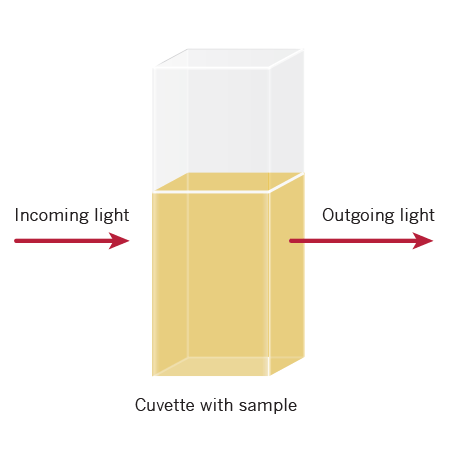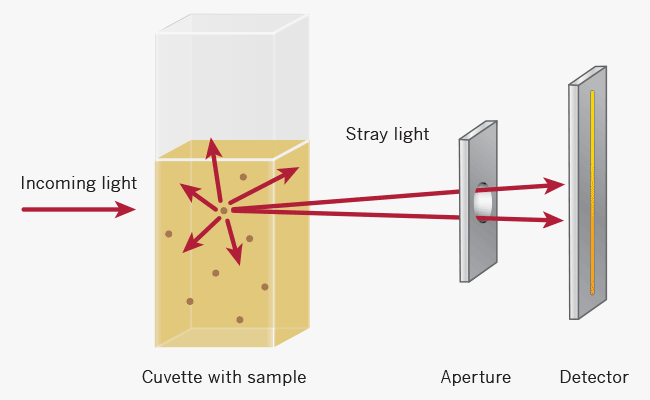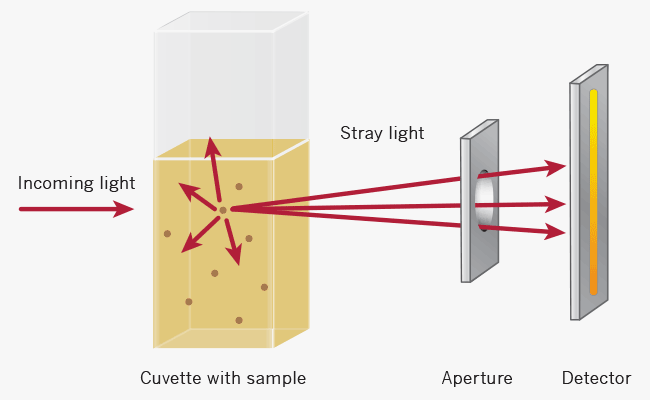Technical Note 8 – OD600
The growth of bacteria in liquid culture media is commonly monitored by measuring the optical density at 600 nm (OD600). OD600 measurements are typically used to determine the stage of growth of a bacterial culture, these measurements help ensure that cells are harvested at an optimum point that corresponds to an appropriate density of live cells. Growth of bacterial cells typically progresses through a series of consecutive phases including: lag, log, stationary and decline (Figure 1). In general, cells should be harvested towards the end of the log phase, using the optical density of the samples to determine when this point has been reached. Cells are routinely grown until the absorbance at 600 nm (known as OD600) reaches approximately 0.4 prior to induction or harvesting. Optical density, in the case of OD600 measurements results from light scattering rather than light absorption (Figure 2). The result of light scattering measurements (OD600) can vary between different photometer types depending on the optical setup.

Figure 1: Bacterial growth curve

Figure 2A: Light scattering of turbid sample

Figure 2B: Light absorption of clear sample
OD600 Measurements on different photometer types
For turbid samples such as cell cultures, the absorbance
measured is due to light scattering, and not the result of
molecular absorption. Because the extent of light scattering
is affected by the optics of the system (distance between
the cell holder and instrument exit slit, monochromator
optics, slit geometry, etc.), different photometer types will
tend to give different OD600 readings for the same turbid
sample (Figure 3).
Results from different photometers cannot be compared
directly for OD600 measurements. Consistently utilizing
the same photometer for OD600 measurements guarantees
the most reproducible results. Results from different
photometer models must be normalized using appropriate
calibration curves.
Cell/ml Calculation
The NPOS software is capable of calculating cells/mL in a
sample. The default value used in the parameter settings
of the NPOS software (Factor: 5, Multiplier: 100,000,000)
is the factor commonly used for E.coli (1 OD600 =
5 x 108 cells/ml). Due to the fact that OD600 measurements
are dependent upon the shape and size of the bacterial
cells in a culture, the cells/mL value for cultures other than
E. coli must be determined with an appropriate factor/
multiplier for the sample type.
Ratio values for commonly used cultures can be found in
the literature. Alternatively, cells can be manually counted
using a microscope and slide as an additional method to
determine the number of cells equal to 1 OD600.

Figure 3A: Higher absorbance reading.

Figure 3B: Lower absorbance reading.
Normalization of OD600 measurements
The NanoPhotometer® comes with a correction factor of
1 as default. To compare OD600 values between different
photometers, it is necessary to determine the constant
deviation or ratio between the absorbance values for the
same sample from each instrument and use this correction
factor within the parameter setting “Correction” of your
NPOS Software to normalize the results. A calibration curve
can be constructed by comparing measured OD600 to
expected OD600.
Cuvette vs. NanoVolume Measurements
OD600 measurements results from light scattering rather
than light absorption. Therefore the use of 10 mm path
length disposable cuvettes is recommended for optical
density measurements of cell culture solutions. The
amount of cells in a sample is reflected in the reading
and the likelihood of fluctuating amount of cells in a drop
from sample to sample can be considered as extremely
significant. It is therefore recommended to utilize cuvettes
for OD600 readings. The cuvette measurements provide a
larger volume of sample thereby reducing the margin of
error and generating more reproducible results.